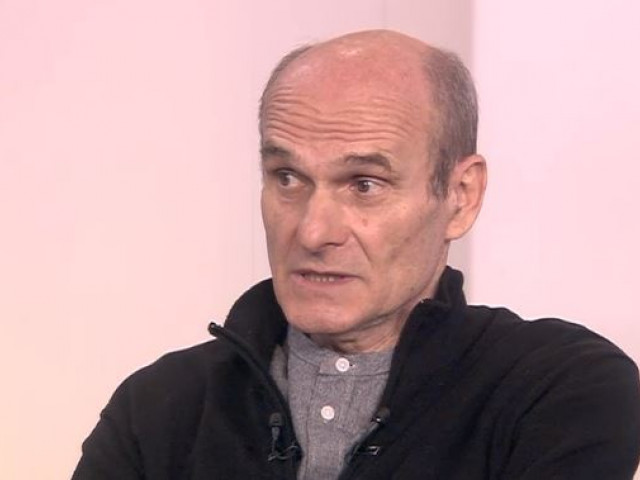
[ad_1]
Journalist Cristian Tudor Popescu sees a logical compatibility problem of the measures proposed by the authorities to relax the restrictions after May 15. If communion with the same teaspoon of faithful is accepted, as requested by the Romanian Orthodox Church, then all other measures are useless, because the risk of infection is enormous, the journalist said on Saturday night, on Digi24.
Vasile Bănescu, spokesman for the Romanian Patriarchate, declared on Digi24 on Saturday that “the communion problem is not a medical problem and should not be an obstacle for anyone.” It is very clear and I say with full responsibility that Holy Communion has never been a source of infestation for anyone. This, of course, operates in the regime of faith. There is no opposition to these measures, “said Vasile Bănescu. He recalled that the Orthodox Church proposed, at the beginning of the health crisis, the use of a teaspoon, which would remain in the custody of the priest and that” cannot be confused with a disposable teaspoon. “
The reaction of the Romanian Orthodox Church comes later, according to the recommendations sent on Saturday by the INSP, within the relaxation measures considered after May 15, in the churches, as special precautions, “it will avoid offering / receiving communion in conditions where they cannot guarantee disposable teaspoons and cups. “
Here is journalist Cristian Tudor Popescu’s comment on this situation:
“I am amazed that we are still in the space of the Christian miracle. Well, what is the point of all these measures, these restrictions regarding the church and the participation of the faithful, with the 8 square meters of believers during the entrance to the church; with the disinfectant at the entrance, with the handwashing or what will be done there, since, here, the Romanian Orthodox Church will decide on the chalice from which everyone should drink. Chalice! The chalice is a glass, it is not a chalice, not the Holy Grail! So what’s the point of all this?
If the believer leaves, after observing all these measures, he leaves and drinks from the same glass with everyone present there, well, it doesn’t make sense! Let’s go free, as it was before the pandemic, since you go and share with everyone else what? This gentleman, the spokesman Bănescu, says: the teaspoon of communion is kept by the priest and should not be confused with the disposable teaspoon! Well, if the priest keeps it, it turns out what? That the teaspoon is multiple or what? And all one! That’s what he said: spoonssquare It is guarded by the priest. Well it’s one then. And if the priest keeps it, does that mean what? It means that no one gets infected if everyone uses the same teaspoon! A distinguished bearded priest also said, some time ago, that for 2,000 years the communion has not infected anyone, sir, it will not infect even now!
It’s about logic again. Do we apply more restrictions to the participation of people in the service and leave communion, since it is the core of the Christian faith, that is, with the teaspoon and the chalice for everyone, or, however, do we give up something like that?
In other words, do the authorities not have the right to intervene in relation to the possibility of infection? The very serious possibility of infection, more serious than anything else, because it is about putting these objects in your mouth!
Even now there will be no special problems if the rules we have mentioned are followed, which are correct, regarding the physical distance between people in the church, disinfection, masks, etc. How, for example, is communion with the mask on your face? Set the mask aside and share, right?
The problem is the logical compatibility of the measurements. If you keep in communion with the same … happy, I don’t even know how to tell you, with the same objects, of the believers, then all other measures are useless and obviously, even for the most awkward person, the chances of infection are immense. “
Editor: Luana Păvălucă